
by Mark Smiley | Nov 19, 2018 | Feature Story Middle Left
by Libby Barrett
Stress during the holidays is common. In fact, it’s even expected. But it’s not something people should just accept. Stress anytime of the year should be held at bay. Here’s what you can do to take the season in stride.
The Effects Of Holidays
It first helps to understand why stress is so rampant this time of year. The American Psychological Association reports that the stress of the holidays has three main culprits: money, time and commercialism.
People feel pressure to give gifts while at the same time not overspending or going in debt. Additional stress comes from growing pressures to shop, wrap, plan meals, and prep for celebrations. Feelings of loneliness can also increase this time of year.
During the holidays and year-round, it’s important to get a handle on this stress. This is because when we’re under stress, our bodies release cortisol and other stress hormones, which can negatively affect our health. Further, the Mayo Clinic explains that long-term stress can lead to anxiety, depression, digestive problems, headaches, heart disease, sleep problems, weight gain, and memory and concentration impairment.
the Mayo Clinic explains that long-term stress can lead to anxiety, depression, digestive problems, headaches, heart disease, sleep problems, weight gain, and memory and concentration impairment.
To counter these risks, these six strategies can help.
Stay active. Physical exercise is known to relieve stress. Research shows it stimulates the production of endorphins and enkephalins, which are the body’s natural feel-good hormones. Based on this, as time-crunched as the holidays may seem, it is important to stick with your exercise routine.
Grab a buddy and go to a class together, which will also combat feelings of isolation that can increase around the holidays. Also, when shopping, park your car far from the entrance so you’ll get some extra steps in. If you’re going out of town, research exercise options where you’ll be. Many gyms do trial or out-of-town packages. Or find some fun exercise routines online that don’t require a gym or equipment.
Don’t over commit. Remember that saying no doesn’t make you a scrooge. If you have to decline a few party invites, it’s okay! During the holidays, it’s important to make time for you. Take care of yourself and family by maintaining your routine as much as possible and getting plenty of rest.
Set a budget. Before you start shopping, establish how much you truly have to spend on gifts and adhere to your budget. It can be easy to get carried away with lavish last-minute presents, but keep in mind it’s the thought that counts. Expenses quickly add up and can create stress going into the new year, especially if you’re holiday shopping on credit.
Stay hydrated. During the holidays, alcohol is often the beverage of choice at many events. While a festive cocktail can take off the stress initially, overindulging can lead to dehydration. Be sure to drink plenty of water to stay hydrated and drink alcohol responsibly.
Try yoga. Yoga is an ancient mind-body practice that focuses on connecting breath with movement, which studies say can engage the parasympathetic nervous system and promote relaxation, digestion, and a sense of calm. And yoga may help reduce stress and anxiety, while enhancing mood and overall wellbeing.
You don’t have to be a master Yogi to try this beneficial exercise. There are classes for all levels and skillsets, and some that don’t even require floor work.
Practice gratitude. Finally, when you’re feeling stressed, try to think of four or five things that you’re grateful for. Experts say cultivating gratitude is one of the best ways to improve emotional well-being and increase satisfaction and happiness. Especially during the consumerism of the holidays, take the time to slow down, reflect on what you have, and be grateful.
and increase satisfaction and happiness. Especially during the consumerism of the holidays, take the time to slow down, reflect on what you have, and be grateful.
This holiday season, relax and focus on peace and happiness. Stay in the moment and try to keep a handle on stress.
Libby is a certified yoga and group fitness instructor and holds specialty certifications in Barre, Silver Sneakers, and BodyPump. She always incorporates cross-training to improve total health and wellness. Her goal is to help everyone love their body while building strength and confidence.

by Mark Smiley | Nov 12, 2018 | Feature Story Bottom Left
 Density vs. The Neighborhood Balancing Affordable Housing And Community Safety
Density vs. The Neighborhood Balancing Affordable Housing And Community Safety
by Amanda Sawyer, Candidate for Denver City Council, District 5
All eyes have been on the November elections, but now the focus shifts to May 2019, when Denver will choose who should fill the 15 spots that will make up our next Mayor, City Council and County Clerk. There are already 45 candidates running for those 15 positions, so you can tell people in Denver are not happy with the current leadership. And the biggest issue on everyone’s mind is affordable housing.
When it comes to the cost of living in Denver, we are a city in crisis. Historically, “affordable housing” is defined as one third of average median income. This is a particularly big deal in neighborhoods with high incomes, because middle income earners like teachers and first responders can’t afford to live there. And there are not enough local housing options for retirees on fixed incomes when they are ready to cash out of their homes and move. We need more affordable housing, especially in these neighborhoods. But where should it go? And, what are the other unintended consequences such as traffic and infrastructure issues?
City planners will tell you that the solution is to build high-density developments along transit corridors. We have already seen this in East Denver in developments like 9th & Colorado and Boulevard One. The problem with this solution is the streets that the City considers to be “transit corridors.”
Let’s look at Holly Street. It is considered a transit corridor, so planners want to add density there. To be fair, there may be places on Holly where added density could work. But to make a blanket generalization that all of Holly Street — a two lane road that runs through neighborhoods filled with families, small businesses and schools — should be developed because the City considers it a transit corridor? That doesn’t make sense.
Take, for example, the Green Flats proposal, on Holly between Cedar and Alameda. The design is attractive, and I appreciate the developer’s attention to green building. He has also been generous with regards to privacy, setbacks, and the number of parking spaces. In another location, this is an excellent project. But, it’s not a good fit for this particular block.
The current development plan provides for 35 parking spaces, accessed solely via the alley that runs from Alameda to Cedar. There are approximately 11 vehicles using that space now, so this would add 24 cars. According to neighbors, the southern entrance to the alley is dangerous because people drive Alameda at high speeds and the alley isn’t clearly visible. They already have to wait for a red light at Alameda and Holly before they can pull out. Their other option is to use the northern entrance to the alley at Cedar between Hudson and Holly. The businesses on that block offer amenities specifically to draw families to the location, so there are always kids at that entrance. The bike racks and cornhole games are located no more than 20 feet from the alley that would be the only vehicle access to this development. It’s already a dangerous situation and 24 more cars will make it worse.
Adding more cross-traffic at Cedar and Holly is also a bad idea. There is no logical way to put a stoplight at this intersection. It would cause a bottleneck that would back up northbound traffic on Holly down onto Alameda and Leetsdale. The City already acknowledged there is essentially no solution to this problem when it installed a flashing crosswalk at this intersection. I’ve personally seen multiple people almost killed in that crosswalk. The proposed development and the additional 24 more cars it will bring to this already highly congested area don’t make sense.
Holly will also be virtually unusable dur-ing the construction phase of this project. While that is temporary, it will force drivers to use the neighborhood streets as our main north-south roads. This will create a safety risk for the neighborhood kids, especially on streets like Fairfax and Dahlia that connect Alameda to 6th Avenue. And, remember, this project is proposed three blocks from the playground of a Denver Public Elementary School which families with young children use every day as their main entrance to the school grounds.
In addition to traffic and safety issues, the proposed development has had the unfortunate effect of driving out other residents. One neighbor has already moved. The property immediately to the south is for sale. Other neighbors have told me they will move if the project is approved. In this case, even the beginning proposal stage has already caused at least two residents to leave the neighborhood, which is a shame.
Finally, I’m concerned that this developer wants to seem like he’s compromising without actually compromising. I experienced this attitude personally while researching the Green Flats project. and I’m not alone. When concerns about the project size were brought up in mediation, the developer’s concession was to lower the number of units from 27 to 23. This seems like a fair compromise; except as I understand it, he intends to combine units that were originally designed as single units into larger units with more bedrooms. If true, this would lower the officially measured density of the project without actually altering its size. As I write this no one has seen revised plans for the project so the truth of that remains unclear. But if the information is correct, the post-mediation “change” is a distinction without a difference.
And, more importantly, it is indicative of a concerning business culture among the development community, where a spirit of camaraderie and partnership with the neighborhoods seems to be lacking. It’s time to change the conversation. Solving Denver’s housing crisis is the most important issue we face. Denver has to add density. We need to come together to find creative solutions. But do we have to add to our existing traffic issues, give up the character of our neighborhoods and the safety of our children, to do it? The final hearing for the Green Flats Project is scheduled for November 7.
To comment, attend the final hearing for the Green Flats Project November 7 at 3 p.m. at 1437 Bannock St. #379. Amanda Sawyer is a licensed Colorado attorney and MBA. She and her husband are raising their kids in East Denver, and she is running for Denver City Council District 5 because she believes we need fresh eyes on the issues that face our neighborhoods. You can find out more about her platform at www.sawyerforfive.org.

by Mark Smiley | Oct 24, 2018 | Glendale City News
by John Arthur
Writer for and on behalf of the City of Glendale
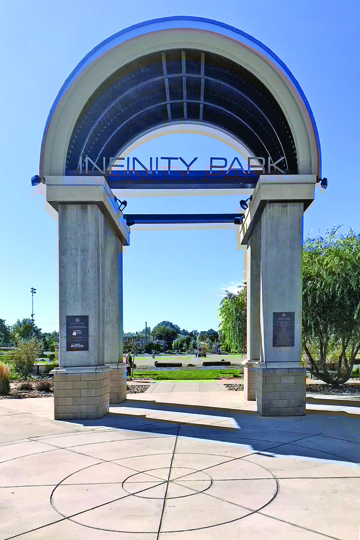
The Infinity Park arch sits just off the turf field in Infinity Park’s open space and just shows you the work of laying the new advanced synthetic grass.
Exciting things are unfolding at Infinity Park this fall, as America’s premier rugby venue recently installed a new, state-of-the-art turf playing surface ahead of welcoming the top women’s rugby sevens teams on the planet for an Olympic-qualifying tournament, in addition to ushering in a second season of professional men’s play in Major League Rugby. Though tournament competition was held on Infinity Park’s natural grass pitch, the new turf saw plenty of practice action over the weekend tournament, felt the cleats of the pro Raptors side as they took on the Utah Warriors, and will be the battleground for amateur and divisional play for many years to come.
The sole U.S. venue for the HSBC World Rugby Women’s 7s Tournament Series in 2018-2019, the installation of the new turf at Infinity Park was completed just days before the October competition kicked off. An important part of the route to qualification for the 2020 Tokyo Summer Olympic Games, the USA Women’s Sevens tournament represents the highest level of competition on the globe. The reemergence of rugby sevens in the 2016 Rio Olympics massively impacted interest in the sport, earning tens of millions of fans as sevens action received Olympic glory for the first time in nearly a century.
The HSBC tournament has enjoyed a massive increase in viewership in just the last 12 months, with millions of broadcast and social media views and triple-digit percentage growth in overall audience. Twelve international teams competed in the October tournament, co-hosted by Glendale and USA Rugby, including the United States, Russia, Spain, Australia, New Zealand, England, France, Ireland, Canada, Fiji, China, and a 2018-19 invitational side from Mexico. Alongside the Olympic qualifying competition was a Saturday beer festival, featuring dozens of local Colorado breweries, cider makers, and distillers. Championship rounds took place October 21, and served as the first hints at which international teams will represent their countries at the 2020 Tokyo Games.
Ahead of the competition, and with the assistance of a sizeable grant from Arapahoe County, Glendale installed a new turf playing surface. Including the latest player-safety technology, Infinity Park’s new turf field meets World Rugby regulation 22, which not only requires laboratory, manufacturer, and on-site testing, but also allows competition to take place from the local to international level with the full confidence that the preservation of participant welfare won’t be a concern. A top priority for the premier rugby governing body on the planet, as well as the coaching and training staff at Infinity Park, the new surface adheres to the highest standards of competition and safety.
More dependably useful for all levels of play, the material installed in October is better at preventing injury because it is softer, deeper, and more technologically advanced than the original Infinity Park turf it replaces, employing a unique and proprietary Desso iDNA X 60 artificial grass with a Pro-Play drainage shock pad. The Desso system, one of the first installed at a rugby-specific facility in the United States, uses what the company calls a three-dimensional resilience system, meaning that the synthetic grass will long retain its shape and will improve in quality through intensive use. The fibers are light reflective, delivering the much more natural appearance of lush green grass when compared to other synthetic turf.
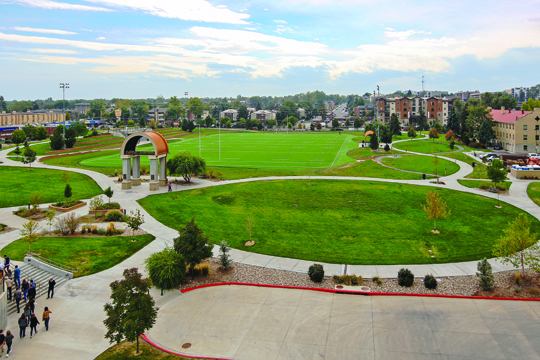
The view from the top of the City of Glendale’s High Altitude Training Center, shows the new turf field is complete and ready for competition. Photo by Justin Purdy
Josh Bertrand, veteran Supervisor of Glendale’s Public Works Department, overseer of installation, and a consummate wealth of knowledge on all things related to Infinity Park, says that in addition to meeting World Rugby regulations, added safety is the most important feature of the new field: “This surface will play better and last longer. It will give additional peace of mind to parents and active youth that use Infinity Park, while also protecting our divisional and professional athletes from injury.” The Pro-Play pad uses thermal bonded, cross-linked polyethylene foam that combines exceptional fall protection and drainage properties. The same product is used by international sporting federations that include field hockey, soccer, and Gaelic and American football, among others. World Rugby field regulations are stringent, and stipulate that high-impact contacts with the turf — like some of the “flying tackles” that make rugby so exciting for fans — are more easily absorbed. Glendale’s brand new, bright green surface will be safely absorbing player contact for years.
Co-hosted by Glendale and USA Rugby, October’s Women’s Sevens tournament brought the number of 2018-2019 tournament rounds to six, providing increased competition and promising more opportunity on the road to Tokyo in the summer of 2020. The HSBC USA Women’s Sevens Tournament at Infinity Park preceded other international stops on the tour, but once again demonstrated that Infinity Park remains the epicenter of American rugby at every level. With future stops at a total of six locations worldwide, including the U.S., Dubai, Australia, Japan, Canada, and France, it seems that the grass, real or synthetic, might actually be greener in Glendale.
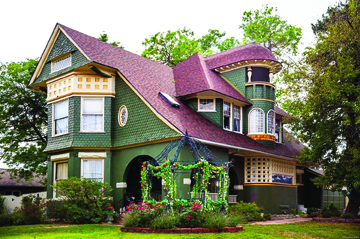
by Mark Smiley | Oct 24, 2018 | Travel
Value Has Grown To $112 Million In Just 12 Months; Complaints Soar As Homes Become The Motel Next Door
by Glen Richardson

Highlands Hot: Unique and nostalgic homes have made short-term rentals in the Highlands neighborhood one of the hottest.
Valley neighborhoods are becoming more and more concerned about short-term rentals by homeowners through Airbnb and others. Their complaint is about the stream of homeowners, some new, renting the house next door for days or up to a few weeks. In neighborhoods such as the Highlands and the Golden Triangle many say the annoyance is progressively on the rise and threatening to escalate into citywide anger and fury.
That’s not a big surprise to Denver: Between January and July of this year the city received 112 complaints concerning primary residence, typically from local neighbors. Furthermore, residents contend that it’s unfair to expect neighbors to be the driving force behind legal compliance.
More than a year and a half after the City of Denver first tried to crack down on short-term rentals, the blossoming industry — buoyed by thousands of new homeowner hosts — has consistently stayed steps ahead of regulators. City records, combined with data provided by Denver-based analytics firm AirDNA reveals incessant problems with the city’s efforts to control a market that is bringing in more than $100 million a year.
Compliance Collapse
According to a study done and reported by BusinessDen — a website for local business news — less than half of the city’s known short-term rental landlords comply with licensing regulations. The bottom line, the study concludes: “The primary-residence requirement, designed to calm the fears of homeowners that their residential neighborhoods could become dominated by the motel next door has proven toothless and largely unenforceable.”
Denver’s Department of Excise & Licenses says the compliance rate is down due to the surge in people listing short-term rentals in the city. That’s because short-term rentals in Denver have grown in value to at least $112 million in the last 12 months. Moreover, it’s expected to top $200 million by 2021. AirDNA figures also show that properties in prime locations have annual cash flow topping six figures.
In only eight years San Francisco-based Airbnb’s initial plan to allow homeowners to host business travelers in a spare bedroom or to rent their family home to tourists while they’re out of town has made it a $25 billion c
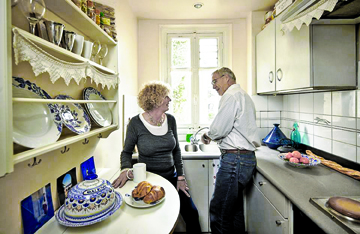
Home Away From Home: Price versus hotels and all the comforts of home have given a big boost in demand for short-term rentals.
ompany. The reason is simple: In comparison to prices for staying in a hotel the cost of a short-term rental is significantly lower. A short-term one-bedroom home in Denver often starts as low as $50 per night. With a hotel there’s typically a bed, a television and maybe a desk and chair. With short-term rentals travelers think they’ve never left home.
Seeking Visitor Dollars
Recognizing the economic benefit to the city coming from short-term rentals Visit Denver — the private, nonprofit association that markets metro Denver — touts on its website that the city has approved and is licensing short-term rentals. The site does urge visitors: “If you are visiting Denver and interested in renting a home, or part of a home, for fewer than 30 days, make sure that you rent from homeowner-hosts who are licensed by the City and County of Denver.”
Denver’s rules don’t allow property owners to run more than one Airbnb location other than a basement or carriage house. Nevertheless, AirDNA records indicate that at least 39% of the city’s properties are offered full-time year-round. More: Another 17% run more than one property. Furthermore, multi-listing hosts account for 40% of Denver’s rentals on Airbnb or about 2,000 listings.
Excise & Licenses has only a single compliance officer to handle 2,200 unlicensed rentals plus another 2,000 listings run by mult
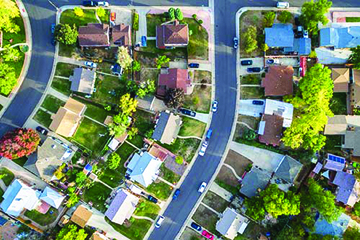
Area Anxiety: Residents worry growth of short-term rentals in Denver’s most popular neighborhoods will change their character and transform the quality of life.
i-unit hosts (prohibited altogether under Denver law). The department’s six inspectors help with short-term rental issues but also deal with the city’s 180 other business licenses plus evolving industries such as marijuana. George Mayl, president of Inter-Neighborhood Cooperation (INC), says it best: “They’re undermanned and understaffed.”
Beginning April 1 of this year Airbnb started collecting Denver Lodger’s tax on sales of short-term lodging. The deal resulted in the city receiving $3 million while not forcing short-term rental property owners to send taxes to the city. During the same period Airbnb made $69 million from rentals. Based on AirDNA data, the city should have received more than $7 million.
Property Value Impact
There is a lot of talk among property owners about short-term rentals and their impact on real estate values. One of the most common questions is do short-term rentals increase the value of a particular residential property? Some homeowners feel it can add as much as 40% to the property value due to generating additional income.
Commercial and residential lenders, however, don’t agree. “A short-term rental has zero impact on value and should not be factored in when evaluating a property.”
Why? Regulations, they argue, can and often change overnight. Moreover they point out that permits are very different than a change in zoning which provides much greater certainty for future buyers of a property. Lenders conclusion: “Don’t buy into the hype that the income from a nightly rental will increase the value of the property.”

Quality Quotient: With 82% of Airbnb properties ranked at least 4.5, the online marketplace now publishes a Quality Score of every Denver short-term rental property.
Investor Influence
While lenders don’t see a benefit to short-term rentals professional real estate investors are far more optimistic. The financial benefit of an Airbnb property is clear to some investors: They can make more money from short-term rentals for the same reason vacationers typically spend more on lodging while traveling than they do on rent.
So how many professional real estate investors list properties on Airbnb? And how large are their businesses?
The best way to see whether there is a major trend of professional investors using Airbnb would be to see how many hosts rent out multiple properties on the site. In Denver at least numbers imply that 40% of listings are from multi-listing hosts indicative of probable professional investors. AirDNA, it should be pointed out, helps real estate investors make short-term rental property investment decisions. Thus the presence of professional investors has become controversial. The upshot is that Airbnb has become close-mouthed about disclosing information.
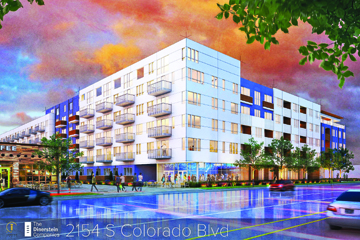
by Mark Smiley | Oct 24, 2018 | General Featured
Despite Colorado Center’s Classy Transit Connection New Adjacent Development Is Creating Corridor Sprawl
by Glen Richardson
“Ride the Rail to reduce traffic, air pollution and lower your stress.”
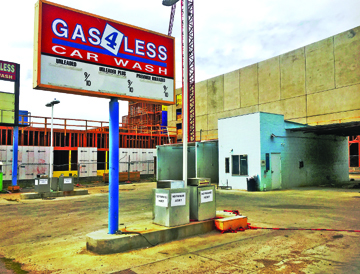
Washed Up: This self-service carwash site has sold for $767,000 and is the location of a proposed second apartment complex on Colorado Blvd. Construction is expected to start early next year with completion in 18 months.
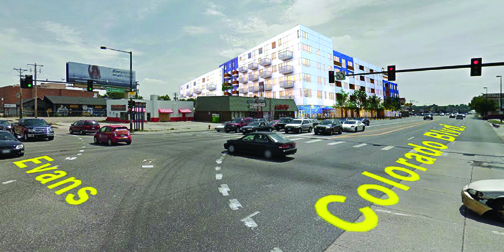
Traffic Trouble: The Millennium Colorado Station apartment complex under construction at Colorado Blvd. south of Evans is already creating traffic gridlock.
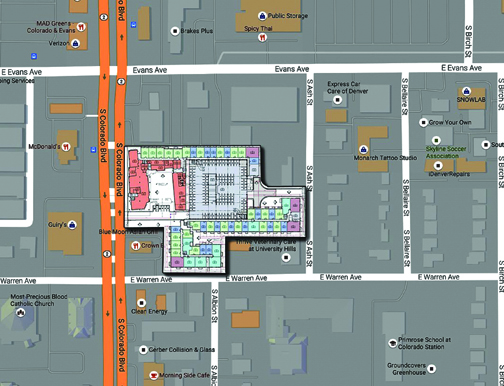
Millennial Map: Millennium Colorado Station’s massive development stretches along Colorado Blvd. to Warren Ave. and extends east from Colorado Blvd. to Ash St.
It is at the Colorado Center more than anywhere else that Denver seemed to be getting transit right. The 13-acre office, retail and entertainment complex features a Light Rail Station, FasTracks, CarShare and an $8 million bike-pedestrian bridge across I-25. As a transit-oriented development (TOD), the venture east of Colorado Blvd. and north of Evans Ave. initially seemed to be the Valley’s perfect transit project.
Wrong: TOD’s “evil brother,” transit-adjacent development (TAD) is literally taking over the adjoining neighborhood with a gargantuan development somewhat close to the Center’s transit, but not oriented to transit. Unfortunately in a city/county where developers have the final say, far more TADs than TODs are popping up along the Valley’s transit line. At nearly every station on any given line, you’ll find, at the least, clumps of new-fangled apartments and more often than not, fresh fast food chains and novel businesses.
Developer Deal
Being promoted as Millennium Colorado Station the new development is a colossal 580,000-sq.-ft., 350-unit apartment complex under construction a block south of Evans Ave. That’s in spite of the fact Colorado Station’s “General Development Plan” approved by the Denver Planning Board in 2006 clearly stated: “Development is to be concentrated closest to the station with a decrease in intensity in adjoining nearby neighborhoods.”
Exploding on the east side of the heavily traveled traffic thoroughfare, the project stretches south along Colorado Blvd. to Warren Ave. A moneymaking way for the developers to leverage the potential of transit-oriented developments without any of the costs, the sprawling project extends east from Colorado Blvd. to Ash St. Furthermore, the apartment complex is likely to charge a premium rate claiming it is along transit routes.
Houston-based The Dinerstein Companies ac
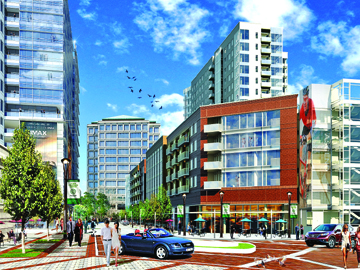
Colorado Center Class: The Master Planned transit-oriented Colorado Center will have this retail “Main Street” section plus a residential tower with 189 apartments, 80 lofts.
quired the old Criterion Shopping Center that later housed the Amish Furniture Gallery at 2154 S. Colorado Blvd. in the summer of 2017. The firm also purchased two adjacent homes on Ash St. where they began construction a year-ago September. Los Angeles real estate investment firm CityView is a partner in the project. South Broadway-based the Cuningham Group Architecture, who is designing the monster structure, describes it as, “a clean, modern design with a diverse mix of materials, including stucco, wood and metal.” Amenities will include a pool, wet deck, cabanas and outdoor kitchen. There will also be a fitness center, game room, bike room and pet spa. Completion of the project is anticipated for the second quarter of 2019.
About The Area
The median real estate price in the E. Evans and South Colorado Blvd. area is $1,264,045, which is more expensive than 99% of the neighborhoods in Colorado. The average monthly rental price is currently $1,925, based on NeighborhoodScout’s exclusive analysis. That’s higher rent than in 68.5% of the state’s neighborhoods.
Neighborhood real estate is primarily made up of small (studio to two bedroom) or large (four or more bedroom) single-family hom
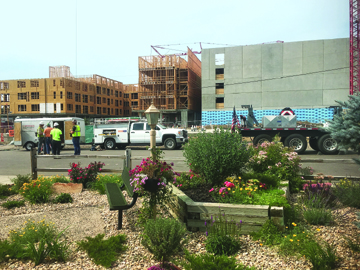
Beauty & The Beast: Huge complex being crammed into area southeast of Colorado and Evans has replaced some businesses and homes while creating concerns for others.
es and apartment complex — high rise apartments. Many of the residential homes are older having been built between 1940-1969. A number of residences, however, were built from 2000 to the present.
The home and apartment vacancy rates are 10.7% in the area of E. Evans and S. Colorado Blvd. According to the NeighborhoodScout analysis, that rate is lower than 40.9% of the neighborhoods nationwide. The analysis indicates this is approximately near the middle for vacancies nationally.
About Center, Station
Centrally located between downtown and the Denver Technology Center, the premier transit oriented development has long been the home to a Dave & Busters plus Colorado Center Stadium 9 & IMAX.
There are now three Class A Office Buildings on the site. The recently finished 400,000-sq.-ft. Tower III completed the office component of the project. Following Denver-based Tryba Architects Master Plan, there is more than one million square feet of additional development that will include a 205,000-sq.-ft. residential tower that will house 189 apartments and 80 loft-style units plus a fitness center. Also in the plans is a new, 24-hour retail “Main Street” section.
Colorado Station is a side-platform light rail station operating as part of the E, F, and H Lines. Opened in November 2006 it now boasts 5,600 boardings and arrivals each day. Surveys show that 2% bike, 43% walk to transit and the balance drive to the station. There is an RTD Park-n-Ride lot two blocks east of Colorado Blvd. Located at 4401 E. Evans Ave. it holds approximately 400 cars.
What’s Ahead?
As cranes loom over the Colorado Blvd. skyline south of Evans Ave. residents and businesses are asking what will their neighborhoods become? The answer can likely be found surrounding RTD’s Evans Station, a light-rail station further west on Evans Ave. that opened in July 2000.

A TAD Too Much: Projects such as this gigantic complex going up on Colorado Blvd. south of Evans leverage the potential of transit-oriented developments without the costs.
There developers have requested permission to build up to eight floors at 2065 S. Cherokee St. in the Overland neighborhood. The 0.7-acre site is just northeast of the Evans Station, a site that has seen several apartment buildings sprout up. The latest zoning request would allow for a project similar to the Encore Evans Station, a 224-unit apartment complex that recently opened.
Some may see it as gentrification, but intensive development with new apartments crammed in alongside or replacing businesses and historic homes appears to be the future of light-rail in Denver. With the city’s encouragement, neighborhoods can expect more and more “evil brother,” transit-adjacent development (TAD) projects hopping on the “light rail gravy train.”
A TAD More Apartments Coming To Colorado Station
A developer has submitted plans for a second apartment complex adjacent to the massive 350-unit Millennium Colorado Station going up on Colorado Blvd. Developer Austin Schmidt wants to build a five-story apartment building that would be surrounded by the enormous project under construction.
The latest transit-adjacent development (TAD) is at the 0.28-acre site of a self-service carwash that has been on the E. Warren Ave. site for at least a dozen years. Schmidt and silent partners paid $767,000 for the lot.
Schmidt admits proximity to the light-rail station two blocks north is what attracted him to the site. The five-story project would have 52 studio, one and two bedroom units. Parking would be on the floor and basement levels. The developer expects to break ground early next year with construction completed within 18 months.

 the Mayo Clinic explains that long-term stress can lead to anxiety, depression, digestive problems, headaches, heart disease, sleep problems, weight gain, and memory and concentration impairment.
the Mayo Clinic explains that long-term stress can lead to anxiety, depression, digestive problems, headaches, heart disease, sleep problems, weight gain, and memory and concentration impairment. and increase satisfaction and happiness. Especially during the consumerism of the holidays, take the time to slow down, reflect on what you have, and be grateful.
and increase satisfaction and happiness. Especially during the consumerism of the holidays, take the time to slow down, reflect on what you have, and be grateful.













